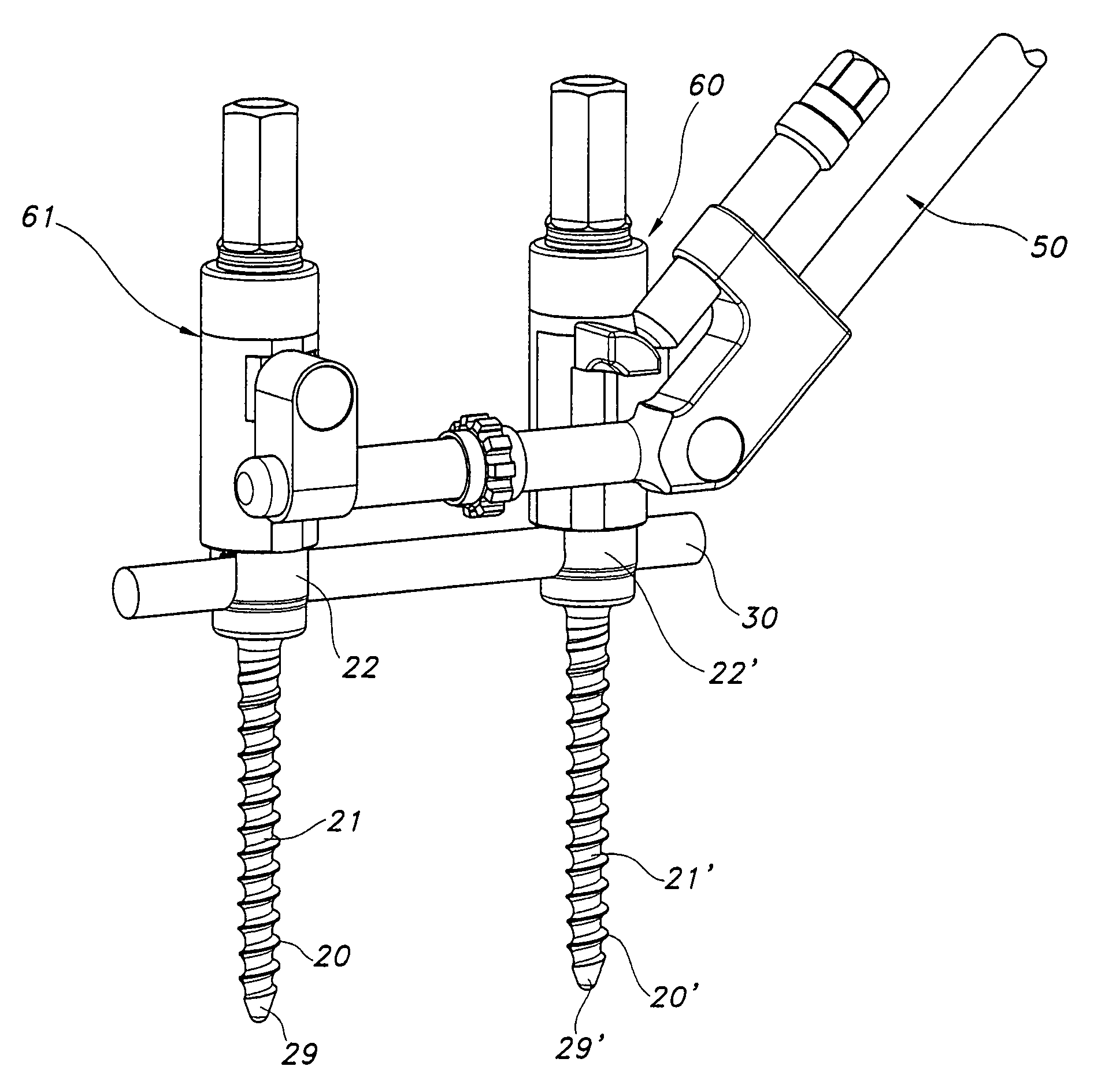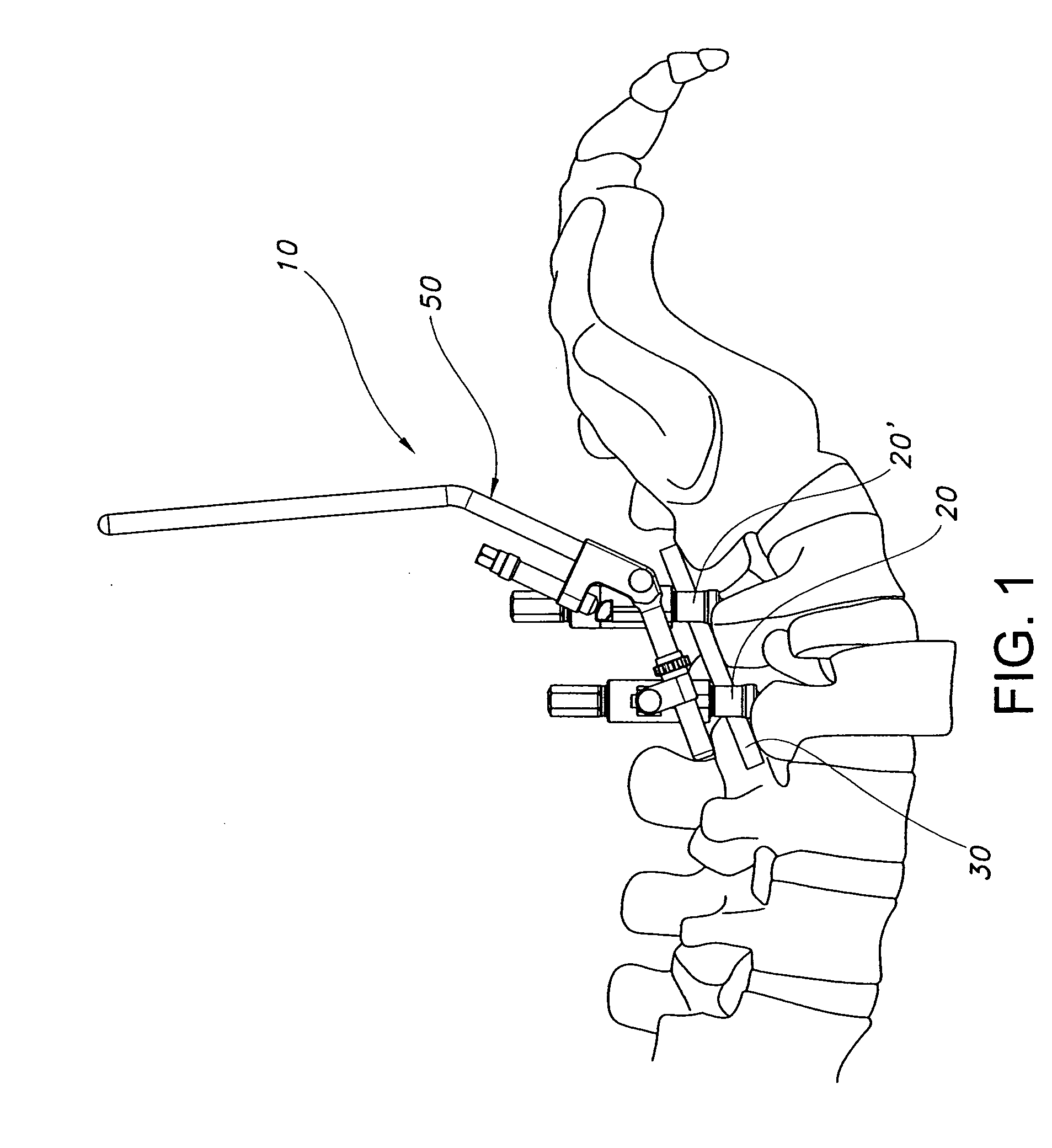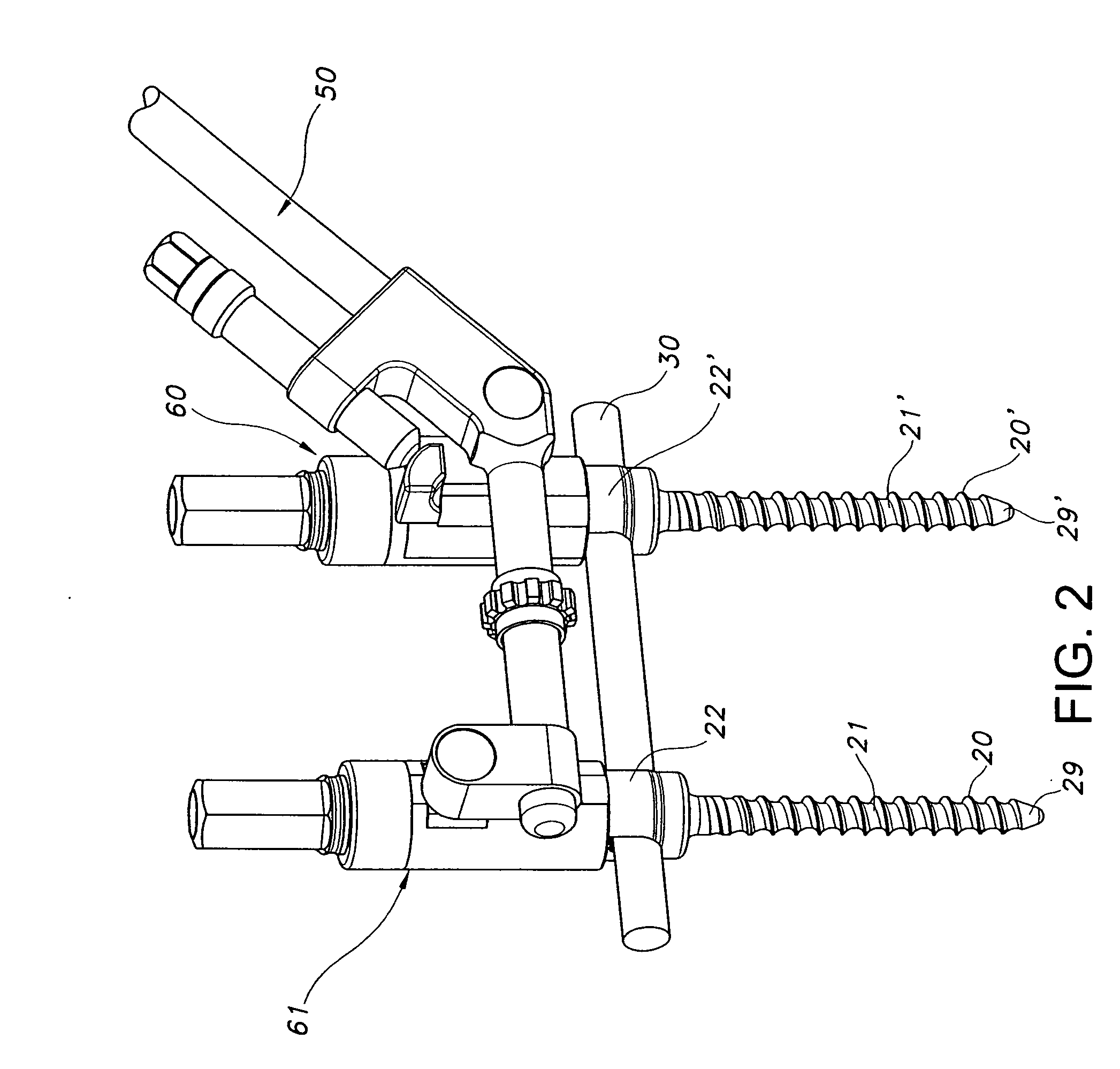Bone repair device and method
a bone repair and bone technology, applied in the field of bone repair devices and methods, can solve the problems of reducing nerve function, extreme and debilitating pain, and temporarily unsecured and unrestrained rods of patients who suffer from such conditions
- Summary
- Abstract
- Description
- Claims
- Application Information
AI Technical Summary
Problems solved by technology
Method used
Image
Examples
first embodiment
[0026]Referring now to the drawing figures generally, and FIGS. 1 and 2 in particular, a spondylolisthesis reduction assembly 10 in accordance with the present invention is shown. It should be understood that multiple assemblies having configurations as shown in FIG. 1, or other configurations, may be used in a given procedure. The arrangements illustrated herein are intended only for purposes of illustrating possible configurations. Assembly 10 includes two bone fixation screws 20 and 20′ and an adjustment apparatus or jig 50. Bone screw 20 is screwed into a vertebral body 4 to be repositioned, and bone screw 20′ is screwed into an adjacent vertebral body 6. Screws 20 and 20′ collectively anchor and support an elongated fixation member, which is shown as a cylindrical rod 30. Rod 30 exerts forces on the vertebra to alter the shape of the spine. It will be understood that in surgical procedures, the rod may span three or more vertebra. For purposes of clarity, however, rod 30 is sho...
third embodiment
[0062]Referring now to FIGS. 11-15, an engagement assembly 260 in accordance with the invention is shown. Engagement assembly 260 includes a one-piece outer sleeve 270 and a locking sleeve 280. Engagement assembly 260 permits locking sleeve 280 and a set screw 240 to be driven into a screw cap simultaneously with a single torque-applying instrument. Because the engagement assembly 260 has a one-piece outer sleeve, the assembly has fewer components to assemble during the manufacturing process.
[0063]Outer sleeve 270 includes a hex head portion 275 and a cylindrical wall 276 that is integrally connected with the hex head portion. Hex head 275 and wall 276 are hollow and form a bore 277 that extends along the longitudinal axis of the outer sleeve 270. Hex head 275 includes a tool-receiving opening 274 adapted to receive a torque-applying tool, and cylindrical wall 276 has a socket end 272 configured to fit over a pedicle screw cap 222, similar to the other embodiments described herein.
[...
PUM
 Login to View More
Login to View More Abstract
Description
Claims
Application Information
 Login to View More
Login to View More - R&D
- Intellectual Property
- Life Sciences
- Materials
- Tech Scout
- Unparalleled Data Quality
- Higher Quality Content
- 60% Fewer Hallucinations
Browse by: Latest US Patents, China's latest patents, Technical Efficacy Thesaurus, Application Domain, Technology Topic, Popular Technical Reports.
© 2025 PatSnap. All rights reserved.Legal|Privacy policy|Modern Slavery Act Transparency Statement|Sitemap|About US| Contact US: help@patsnap.com



